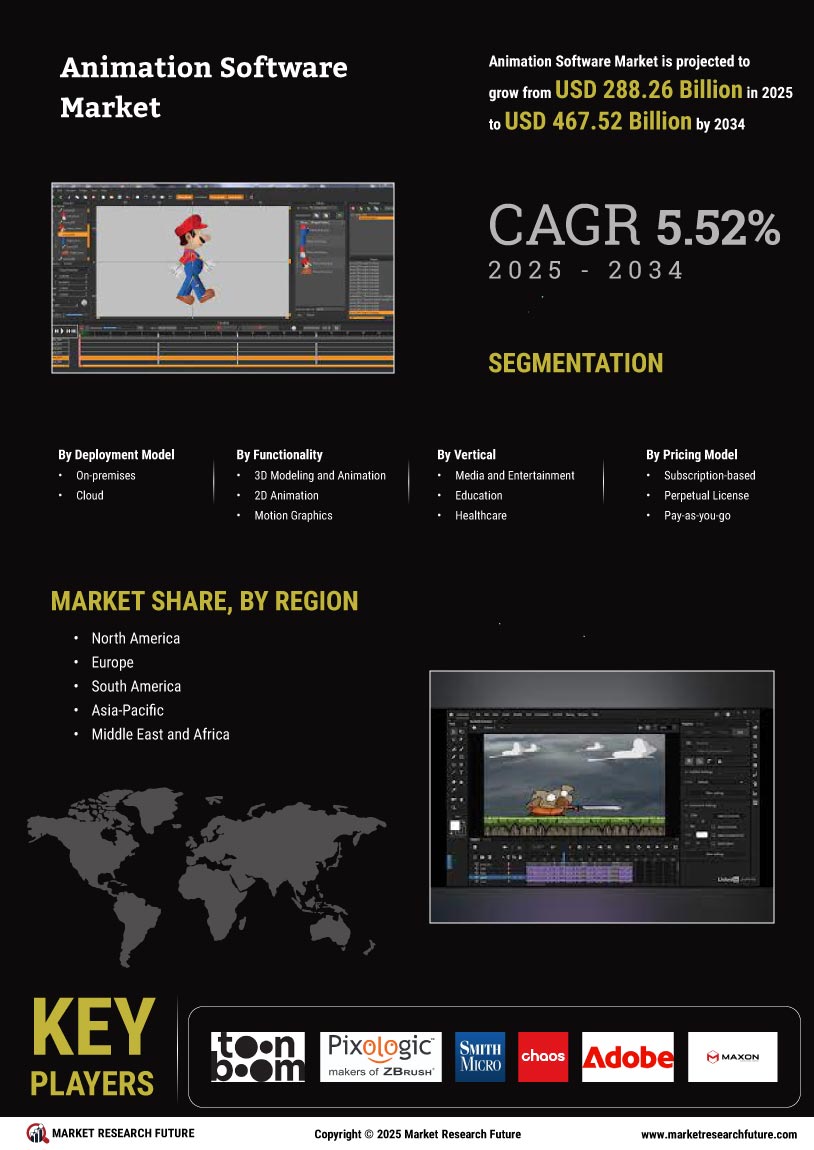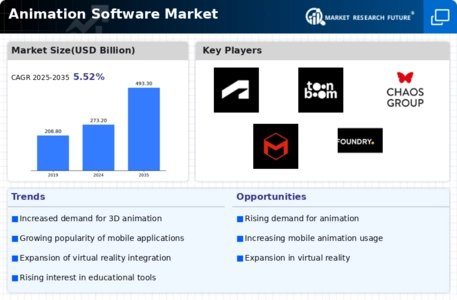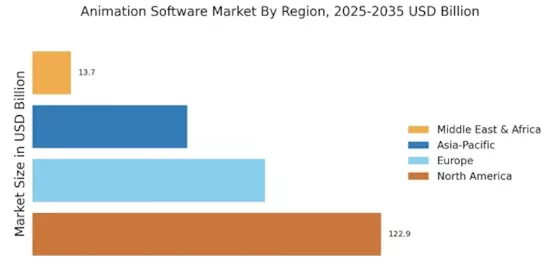Advancements in Technology and Tools
The Animation Software Market is propelled by continuous advancements in technology and tools. Innovations such as real-time rendering, augmented reality, and machine learning are transforming the animation landscape. In 2025, the integration of these technologies is expected to enhance the capabilities of animation software, allowing for more complex and realistic animations. This evolution not only attracts professional animators but also encourages hobbyists to explore animation, thereby broadening the market base. As a result, the Animation Software Market is likely to experience accelerated growth, driven by the demand for cutting-edge tools that facilitate creativity.
Expansion of Educational Applications
The Animation Software Market is witnessing a significant expansion in educational applications. Educational institutions are increasingly adopting animation tools to create engaging learning materials. This trend is supported by research indicating that animated content can improve retention rates by up to 50%. As of 2025, the educational technology sector is expected to allocate a substantial portion of its budget to animation software, reflecting a growing recognition of its effectiveness in enhancing student engagement. This shift not only benefits students but also drives innovation within the Animation Software Market, as developers tailor their products to meet educational needs.
Growing Demand for Animation in Entertainment
The Animation Software Market experiences a notable surge in demand driven by the entertainment sector. As streaming platforms proliferate, the need for high-quality animated content escalates. In 2025, the animation segment within the entertainment industry is projected to reach a valuation of approximately 270 billion USD, indicating a robust growth trajectory. This demand is not limited to traditional media; video games and virtual reality applications are also increasingly reliant on sophisticated animation software. Consequently, companies are investing heavily in animation tools to enhance storytelling and visual appeal, thereby propelling the Animation Software Market forward.
Increased Investment in Advertising and Marketing
The Animation Software Market benefits from increased investment in advertising and marketing. Businesses are increasingly recognizing the effectiveness of animated content in capturing consumer attention and conveying messages succinctly. In 2025, it is projected that companies will allocate a significant portion of their marketing budgets to animated advertisements, with the animation sector expected to grow by approximately 15% annually. This trend underscores the importance of animation in modern marketing strategies, prompting a surge in demand for animation software. Consequently, the Animation Software Market is poised for growth as businesses seek innovative ways to engage their audiences.
Rising Popularity of Social Media Content Creation
The Animation Software Market is significantly influenced by the rising popularity of social media content creation. As individuals and brands seek to differentiate themselves in a crowded digital landscape, animated content has emerged as a powerful tool for engagement. In 2025, it is estimated that over 70% of marketers will incorporate animation into their social media strategies. This trend is likely to stimulate demand for user-friendly animation software that enables creators to produce high-quality content quickly. Consequently, the Animation Software Market is adapting to cater to this burgeoning segment, fostering innovation and accessibility.


















Leave a Comment